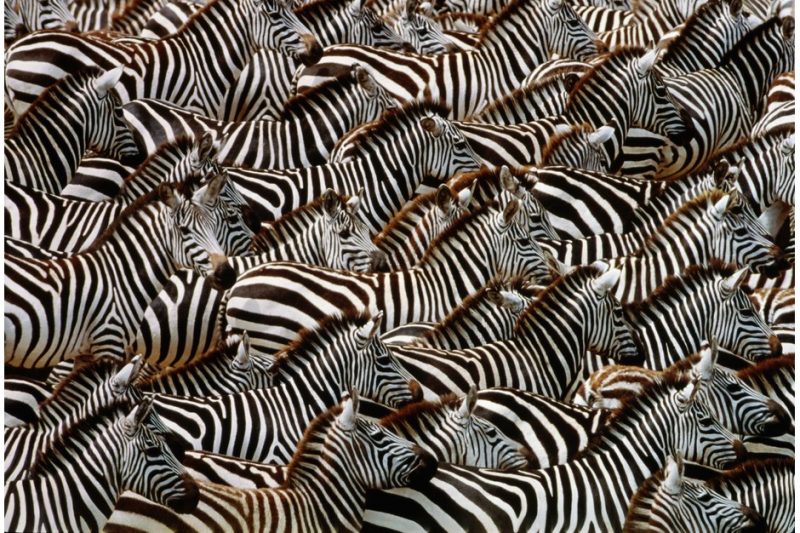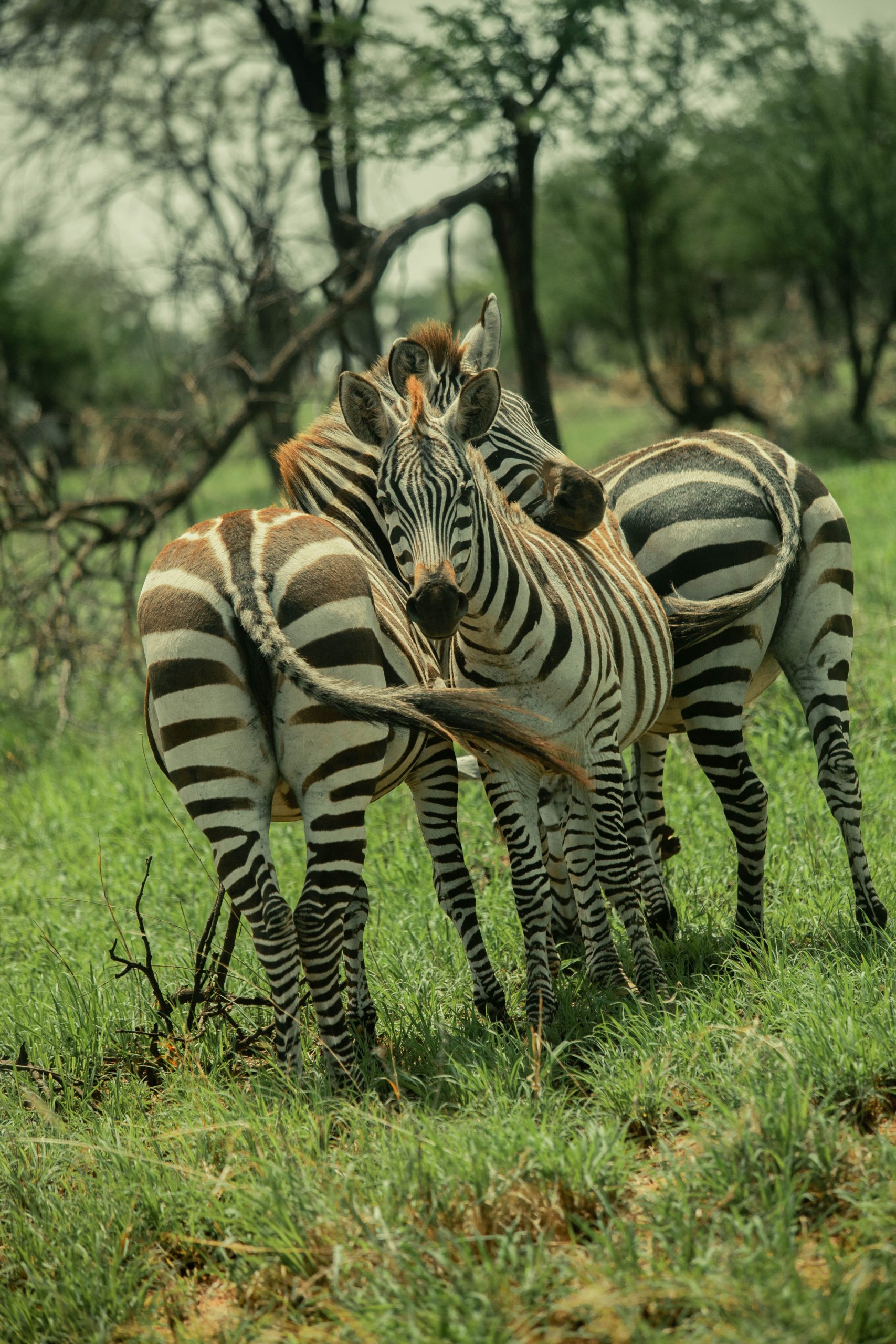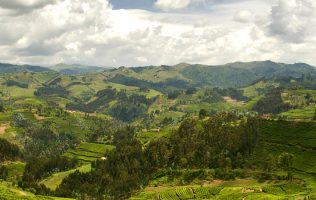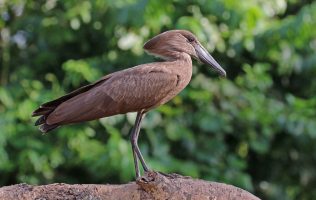One of the many beautiful creatures inhabiting Africa. Many people know them for their iconic stripes and the never ending riddle about them being black with white stripes or white with black stripes. The zebra is mostly covered in white and striped with black or dark brown stripes but underneath their coat is black skin.
Zebras are closely related to horses but they’re not the same species. They’re in the same family (called Equidae) and they can even breed with each other, but zebras aren’t just striped horses as they evolved separately, they also have very different temperaments to horses.
They’re far more aggressive and a lot more dangerous. Zebras have been known to kick each other to death, they will viciously bite any human that comes too close, and there are even many accounts of zebras killing lions.
A group of zebras is called a zeal, the Swahili name for a zebra is Punda Milia. Zebra’s bunch together to confuse colour-blind predators, such as lions, which mistake the patterns as grass.
Zebras are very speedy animals, and can reach speeds of up to 65kph when galloping across the plains. This is just fast enough to outpace predators such as lions. Foals can run with the herd within a few hours of birth.
There are three species of zebra:
- Grevy’s zebra (Equus grevyi)
It’s also known as the imperial zebra. The largest living wild equid and the largest and most threatened of the three species of zebras. Named after Jules grevy, it is found in Kenya and Ethiopia. Compared with other zebras it is tall has large ears and its stripes are narrower.
It lives in semi-arid grasslands where it feeds on grasses, legumes & browser.it can survive up to five days without water.it differs from other zebra species in that it doesn’t live in harems &has few long-lasting social bonds foal relationships form the basis of the social system of the grevys zebra.
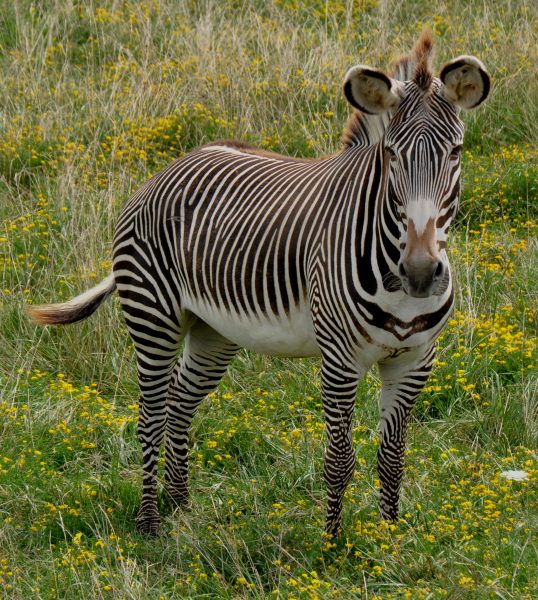
- Mountain zebra (E. zebra)
The mountain zebra has a dewlap, which is more conspicuous. They are boldly striped in black or dark brown, No two individual look exactly alike. The whole body is stripped except for the belly.in the cape mountain zebra the ground colour is effectively white but the ground colour in the Hartmann’s zebra is slightly buff.
Adult mountain zebras have a head and body length of 6ft 11inch to 8ft 6inch and a tail of 40 to 55cm (16 to 22inch long with height ranges from 1.16 to 1.5m (3ft 10 into 4ft 11inch.they weigh from 204 to 372kg, they are found on mountain slopes open grasslands, woodlands and area with sufficient vegetation but their preferred habitats is mountainous terrain especially escarpment with a diversity of grass species.
They live in hot, dry, rocky, mountainous and hilly habitats, they prefer slopes and plateaus as high as 1000m (3,300ft) above sea-level although they do migrate lower during winter. Their preferred diet is tufted grass but in times of shortage they browse, eating bark, twigs, leaves, buds, fruit and roots. They drink every day.
When no surface water is available due to drought, they commonly dig ground water in dry river beds.it is a native to south western Angola –Namibia and south Africa.
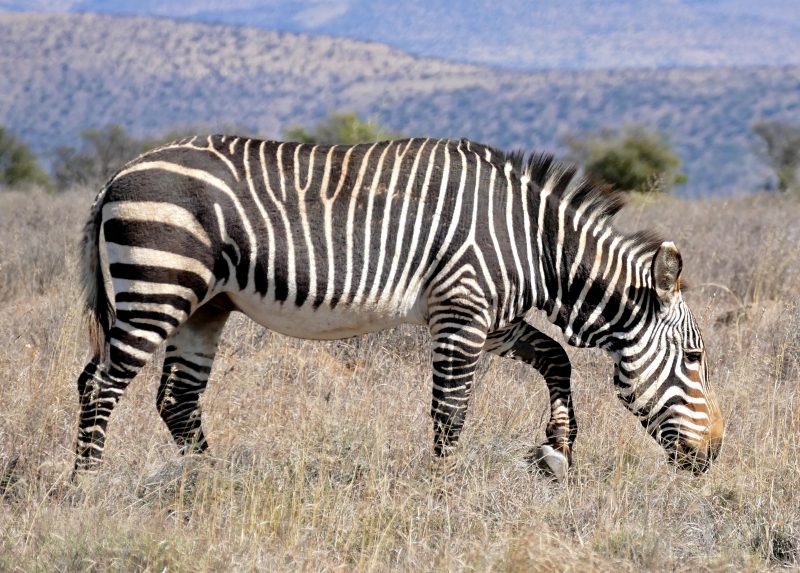
- Plains zebra (E. quagga), the latter of which is by far the most common. The plains zebra is divided into six extant subspecies (the quagga is an extinct subspecies); the mountain into two.
Plain zebras also known as the common zebra is the most common and geographically widespread species of zebra.it s range is fragmented but spans much of southern and eastern Africa south of the Sahara. The plain zebra is intermediate in size between the larger grevy zebra and the smaller mountain zebra and tend to have broader stripes than both.
The plain zebra’s habitat is generally but not exclusively treeless grasslands and savannah woodlands both tropical and temperate.
They generally avoid desert, dense rainforest and permanent wetlands. The plains zebra is a highly social species, forming harems with a single stallion several mares and recent offspring.
Bachelor groups also form groups may come together to form herds. The animals keep watch for predators, they bark or snort when they see a predator and the harem stallion’s attacks predators to defend his harem.
The plains zebra remains common in game reserves but is threaten by human activities such as hunting for its meat and hide as well as competition with livestock and encroachment by farming on much of its habitat. The species population is stable and not endangered.
Anew born is capable of standing almost immediately and starts to eat grass within a week, at the moment of birth, a mother zebra keeps any other zebra away from her foal.
Plain zebras primarily feed on grass, sometimes browse or dig for corns and rhizomes during the dry season. Like all zebras, they are boldly stripped in black and white and two individuals look exactly alike compared to other species, the plains zebra has broader strips.
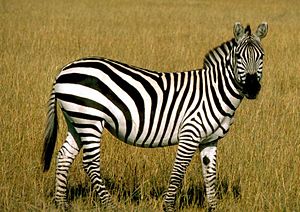
Zebras are odd-toed ungulates and thus belong to the Perissodactyla order. There are three extant families within this order: Equidae (horses, asses, and zebras), Rhinocerotidae (rhinos), and Tapiridae (tapirs).
Zebras run in a zig-zag pattern when being chased by a predator to make it more difficult for the predator to run after them.
Zebras make a range of noises, some of which are the same as horses while others are unique.
Like horses, zebras will snort when excited and nicker (creating a ‘whuffle’ kind of sound by blowing air through their nose and lips) when greeting each other.
But zebras also bray in a similar way to donkeys and mules, but horses don’t. A zebra bray is wider ranging than a donkey’s, starting as a low growl and rising to a high squeal not unlike a pig. Braying like this can be heard over great distances and is used to find potential mates.
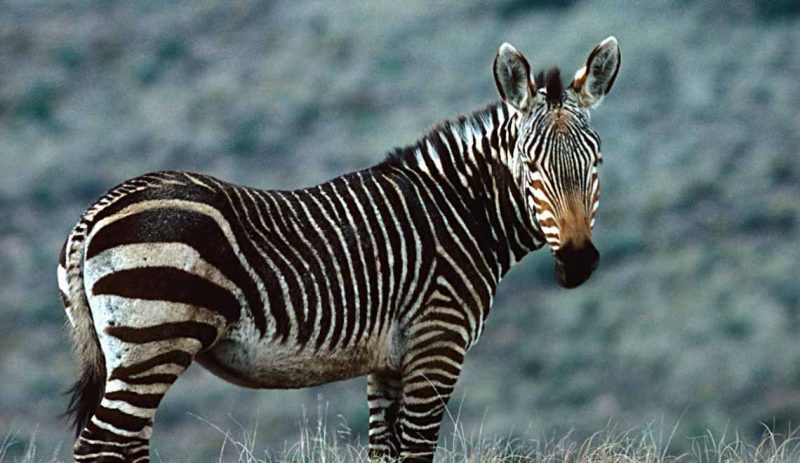
Zebras are united by their distinctive black and white striped coats. Their stripes come in different patterns, unique to each individual .they are generally social animals that live in small harems to large herds unlike their closest relatives horses and donkeys, zebras have never been truly domesticated.
Finally, zebras also have a surprisingly high-pitched bark. It sounds more like a noise you’d expect from a wild dog rather than a member of the horse family, but zebras use it to find each other in a herd.
A dazzle of zebras is the most common collective noun.
